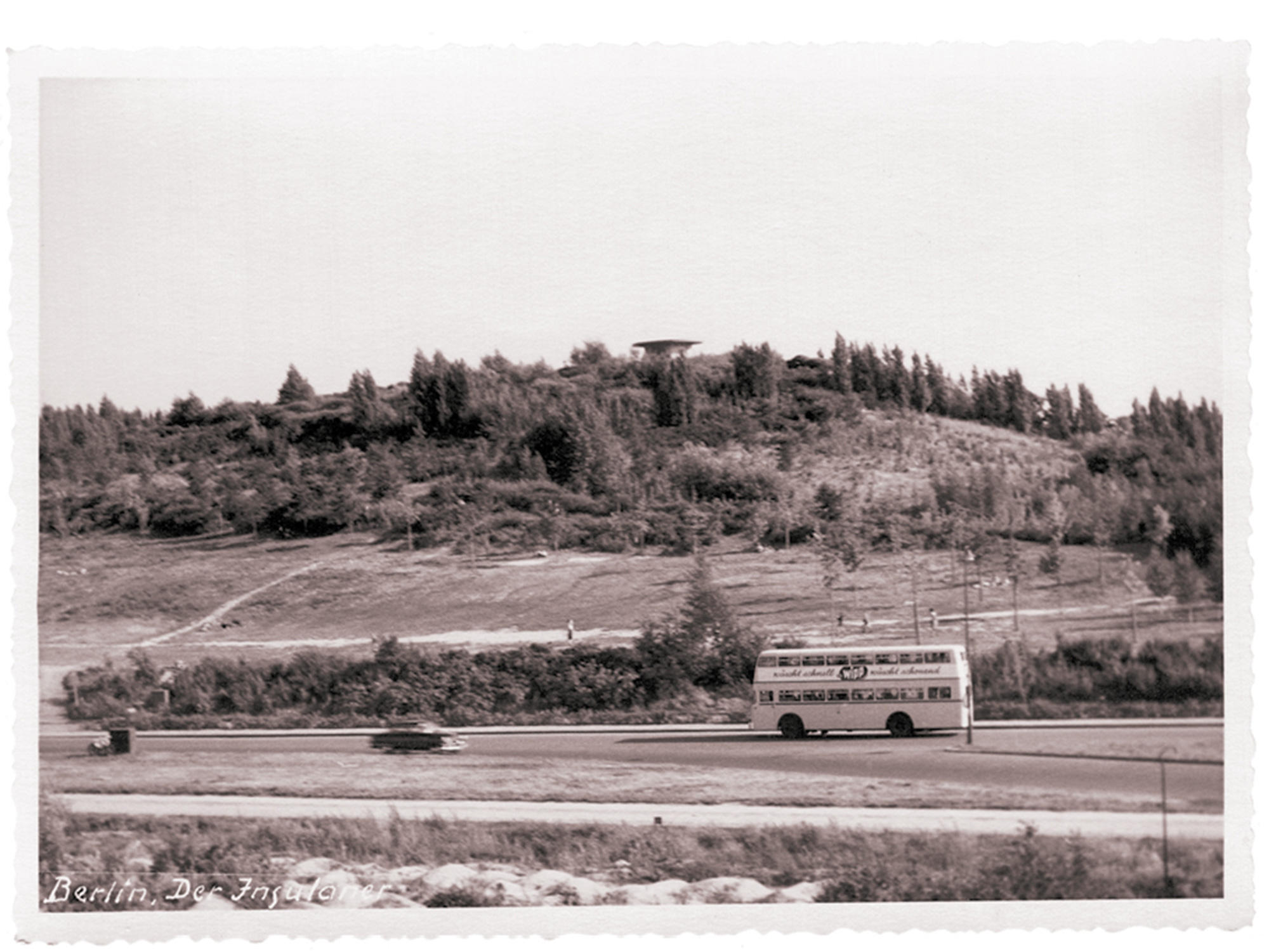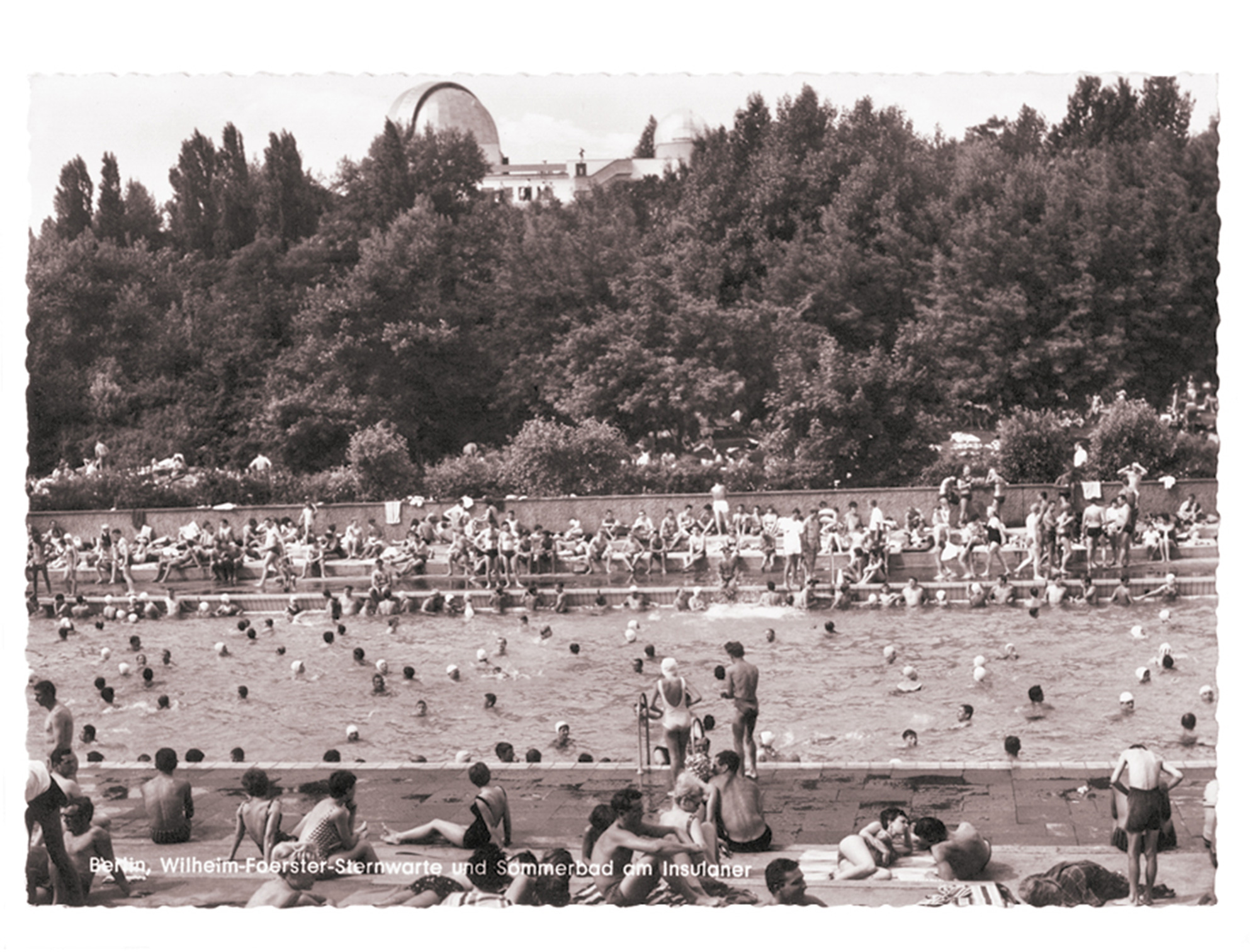The Islanders
Castaways in a divided Berlin
Andreas Hiepko

The German word Insulaner—from the Latin root insulanus—usually denotes the inhabitant of an island. As a rule, one meets the Insulaner in a text that locates the island somewhere in the South Seas. The Insulaner is associated with happiness, it seems: it’s true that the South Seas were home to some of the most popular test sites for atomic bombs, but that knowledge does not appear to have interfered with the Gauguin-inspired fantasy that we nurture. Recent reports that have reached us from Pitcairn Island of the descendants of the mutineers of the Bounty evoke thoughts of Dante’s Inferno, but even so we continue to stand alongside Marlon Brando. In our imaginary cartography, the islanders inhabit an earthly paradise, whose luxuriant flora knows no forbidden fruit.
In addition to its exotic connotations, the word is also used in a peculiarly German context: Insulaner denotes those who lived in West Berlin some time between 1948 and 1989. The ideological rationale that lies behind this turn of phrase has the same compelling simplicity that characterized the schematic thinking of the Cold War: in the eyes of the free world, West Berlin was an island of liberty in the midst of a red sea. In any case, this is where the difficulty begins. Is this a case of that humor referred to as Berliner Schnauze (Berlin lip, literally “snout”)? Or, rather, is it merely a product of the machinery of propaganda and counter-propaganda that ran at full capacity between the blockade and the building of the wall?

Answering these questions directly is difficult even for those who were born in the Western sectors of the city shortly after the wall went up. For them, the Insulaner was first and foremost a site of recreational activity: a mountain of rubble fringed with grass upon which an observatory stood and which, at seventy-five meters tall, was high enough that one could sled down it in winter at intoxicating speeds. In summer, an outdoor pool with its ten-meter diving board invited experiments with vertigo. Not far away lay the unavoidable mini-golf course, and on the other side of a road that led to the suburbs of the southwest was a typical 1970s adventure playground. In comparison to such breathtaking possibilities, the question of why the mountain was called Insulaner slipped into the background.
The genesis of this mountain, which stood on the border between the suburbs of Schöneberg and Steglitz, is particularly revealing. “Erected in the years 1946 to 1951, in the face of hardship and blockade,” according to a memorial plaque, the Insulaner is an excellent example of unintentional land art in the spirit of Robert Smithson. For a full five years, wagons transported the remains of the housing of the Bavarian Quarter, destroyed by Allied bombing, along a thread of train tracks to an inner-city wasteland. There, financed by the Marshall Plan, earthwork artists heaped up a gigantic monument to defeat: a mass grave that, according to one eyewitness, included the remains of a Russian T-46 tank.